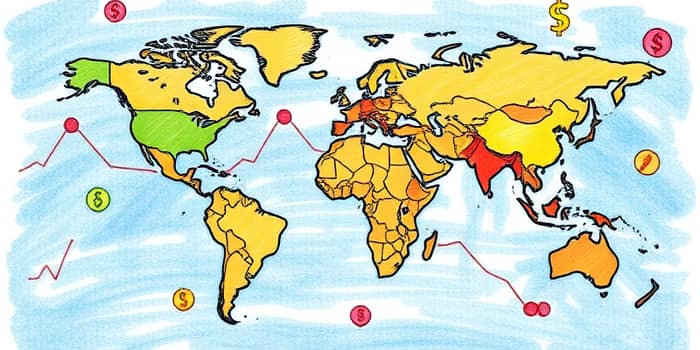
The global economy stands at a crossroads as forecasts for 2025 reveal a slowdown not seen since 2008 outside of recessions. While the World Bank projects a growth rate of 2.3%, other institutions such as Morgan Stanley and the OECD anticipate a more optimistic 2.9%. These divergent views underscore the complexity of modern economic drivers and the need for stakeholders to adapt swiftly. Investors, policymakers, and businesses must navigate this environment carefully to seize opportunities and mitigate risks in an increasingly interconnected world.
Major international organizations have updated their projections in response to evolving conditions. The World Bank warns of the slowest expansion in over a decade, citing lingering aftershocks from the pandemic and geopolitical tensions. In contrast, Morgan Stanley and the OECD highlight reasons for cautious optimism, including technological adoption and recovering consumer demand. Understanding these perspectives allows market participants to calibrate expectations and plan strategically for the year ahead.
Below is a comparison of key growth estimates for recent years and 2025 projections:
The United States is set to experience a deceleration, with GDP growth easing from 2.8% in 2024 to 1.9% in both 2025 and 2026. Europe’s euro area may see moderate growth improvements expected in euro member states, though the pace will remain below long-term averages. China anticipates a cooling from its breakneck expansion, striving for stability rather than catch-up growth. Emerging markets, meanwhile, face a slowdown from 4.1% in 2024 to 3.4% in 2025, with Asia particularly exposed to trade tensions and capital flow shifts.
Regional nuances matter, as each area responds uniquely to the global backdrop of uncertainty and opportunity.
A confluence of headwinds and tailwinds shapes the outlook, from policy shifts to supply chain realignments. Central to this picture are trade tensions and policy uncertainty, which have elevated risk premiums and deterred long-term investment. Meanwhile, inflation has shown signs of abating, with G20 nations projected to see rates fall from highs of 5–7% to around 3.6% in 2025. Looking ahead, central banks may ease interest rates if inflation decelerates as expected, while governments could ramp up spending to support infrastructure, health, and education.
For investors, slower growth often translates into cautious spending and investment strategies. Equity markets may experience heightened volatility as earnings forecasts are adjusted, and bonds could rally if central banks signal rate cuts. Corporate leaders, meanwhile, will need to optimize cost structures and diversify supply chains to build resilience against shocks.
Commodity markets offer another window into global trends. Energy and metal prices could fluctuate in response to both demand shifts and policy changes on climate. Companies reliant on raw materials must prepare for potential market disruptions and volatility, hedging risks where feasible and exploring alternative sourcing arrangements.
The deceleration of growth poses significant obstacles for achieving the United Nations’ Sustainable Development Goals. Lower expansion rates risk stalling poverty reduction, healthcare improvements, and educational access in the world’s most vulnerable regions. Informal employment tends to rise under economic strain, making social safety nets more critical than ever. Public budgets under pressure may lead to higher deficits in developing economies, necessitating innovative financing and debt management strategies to maintain stability.
Stakeholders across regions can take proactive measures to navigate the evolving landscape:
By adopting tailored policies and strategic investments, countries and businesses can tap into areas of resilience and innovation, even when growth slows globally.
As 2025 approaches, the interplay of forecasts, policies, and market forces will shape economic outcomes. While growth may be more subdued than in recent years, opportunities remain for those who plan with foresight and agility. Investors should diversify portfolios, managers ought to optimize operations, and governments must coordinate policies that foster sustainable, inclusive progress. By embracing collaboration and innovation, stakeholders can turn challenges into catalysts for long-term prosperity, ensuring that the next phase of growth is both robust and equitable.
References













